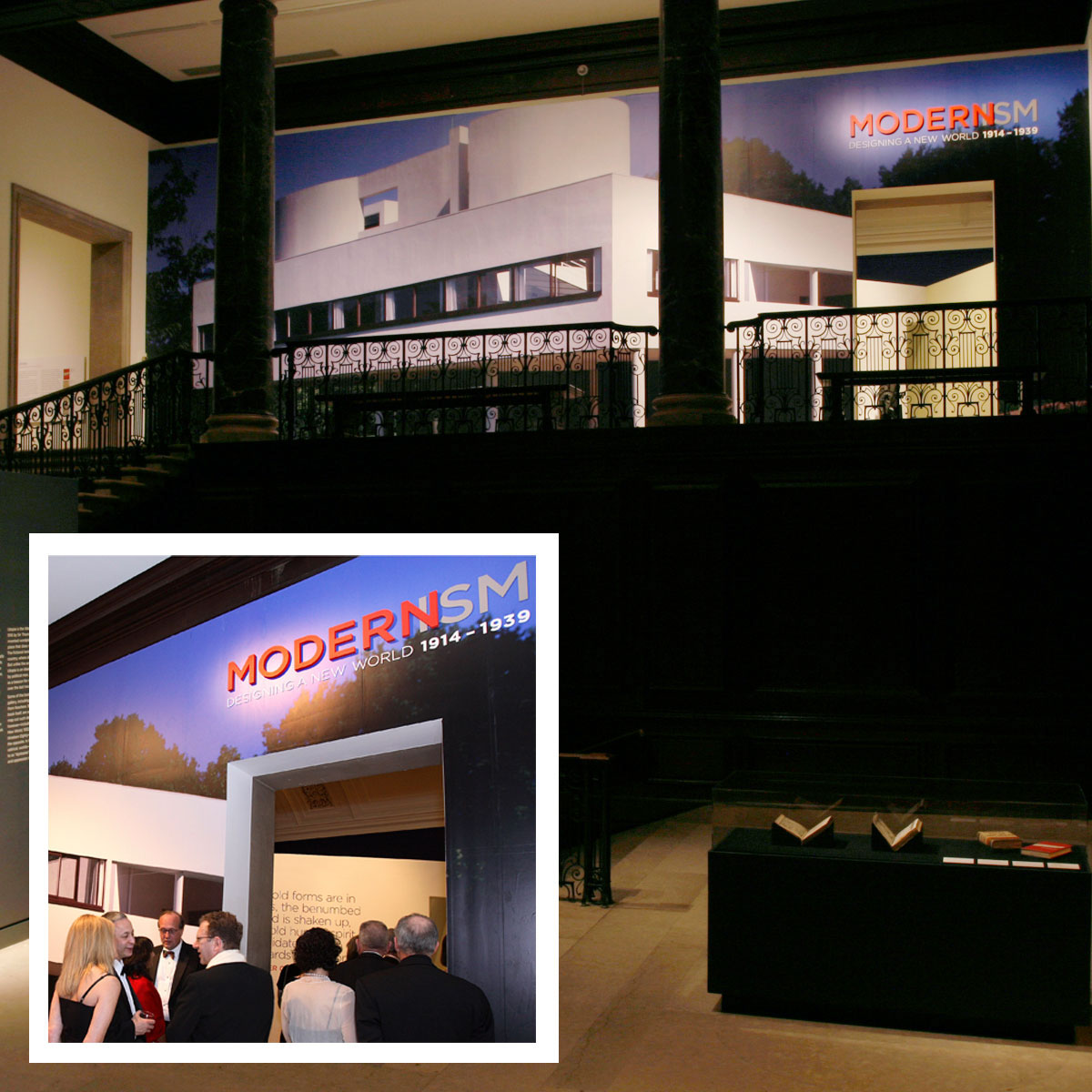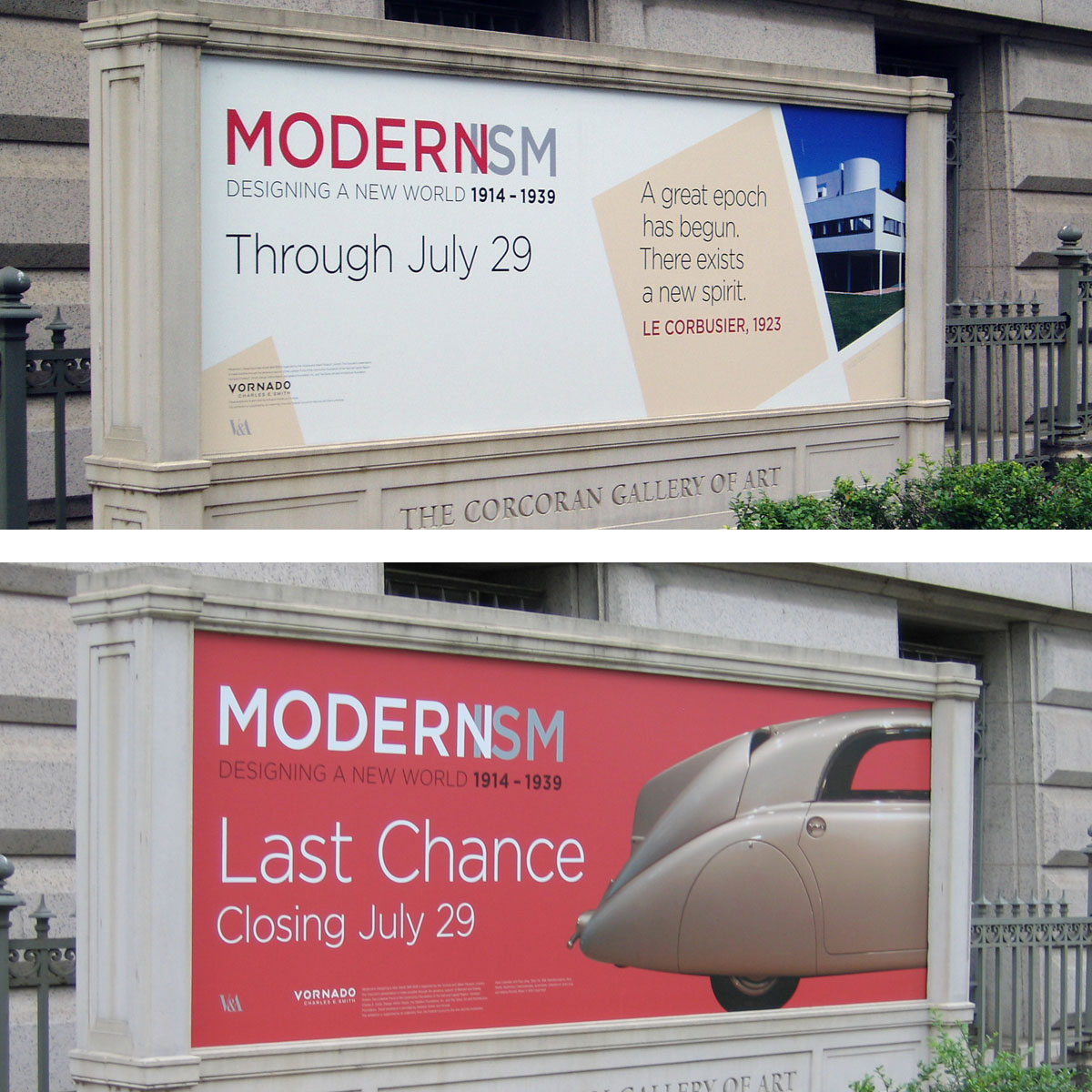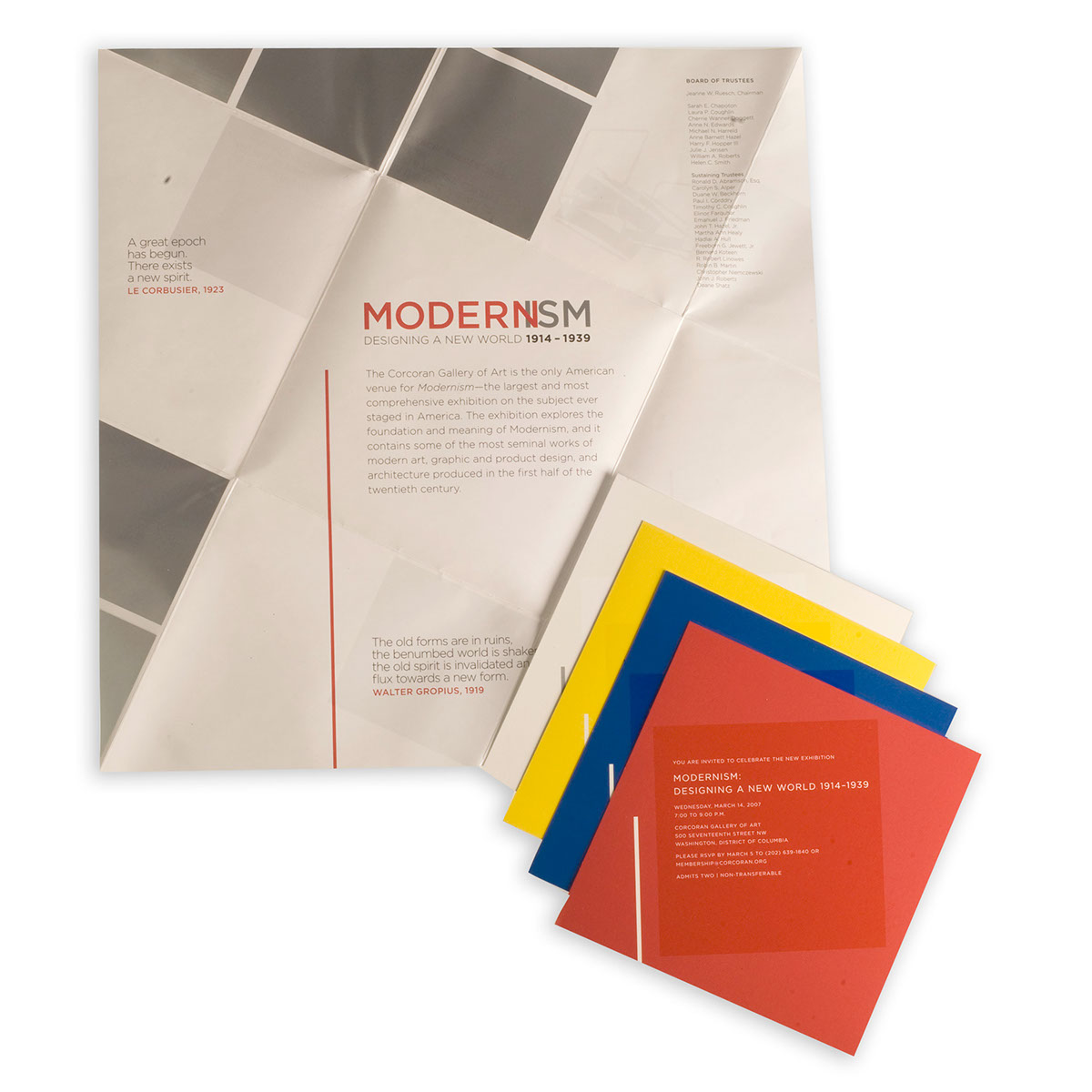







March 17, 2007 to July 29, 2007
Modernism: Designing a New World 1914–1939 was the largest and most comprehensive exhibition on the subject ever staged in America, and the Corcoran Gallery of Art was the only American venue. The exhibition explored the foundation and meaning of Modernism, and it contained some of the most seminal works of modern art, graphic and product design, and architecture produced in the first half of the 20th century. It traced the historic development of modern form through social, industrial, and political upheavals of the 1920s and 1930s. It investigated the role of the factory and mass production; the spiritual aspect of modern life; the period’s fascination with the healthy body and organic forms found in nature; and national identity.
With works from 17 countries, this was an exhaustive survey of important objects and images from many media and industries involved in shaping the twentieth century. Such a wide array demonstrated how Modernist philosophy affected nearly every area of life then, and how it continues to permeate our world today. Influences appear in designs of housing, furniture, domestic and manufacturing goods, theater and cinema, automobiles and military engineering, and even clothing and health care. The key Modern movements – such as the Bauhaus, the seminal German art school, Suprematism in Russia, the DeStijl Group in the Netherlands, and Purism in France – were explored in detail. The exhibition also revealed the spread of Modernism from its notable origins in Europe, to influential regions such as the United States, South Africa and South America.
There were over 350 objects and more than 50 film clips in Modernism. Among the key Modernist figures featured were artists Piet Mondrian, Fernand Léger, Paul Klee, Pablo Picasso, Kasimir Malevich, Man Ray, Wassily Kandinsky and Lazlo Moholy-Nagy; architects Mies van der Rohe, Le Corbusier, Frank Lloyd Wright and Walter Gropius; and designers Marcel Breuer, Gerrit Rietveld, Marianne Brandt and Alvar Aalto.


